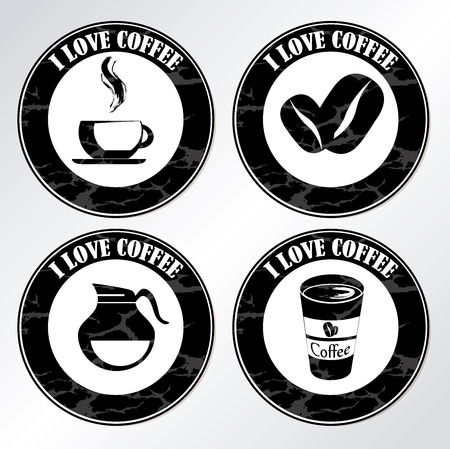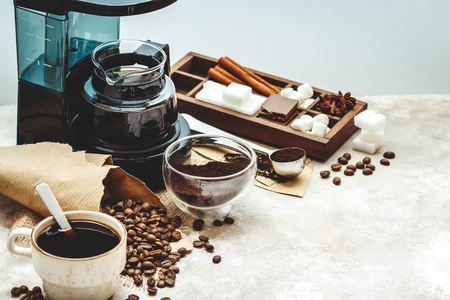1. The Origins of Australian Coffee Culture
Australia’s coffee culture is one of the most distinctive in the world, and it didn’t happen by accident. Unlike countries where large coffee chains dominate the scene, Australia’s love for high-quality, handcrafted coffee has deep roots tied to its history, geography, and multicultural population.
The Influence of European Immigrants
The modern Australian coffee scene began to take shape after World War II, when waves of Italian and Greek immigrants brought their espresso traditions with them. These communities opened small cafés in cities like Melbourne and Sydney, introducing locals to strong, flavorful espresso-based drinks that were very different from the instant coffee popular at the time.
Traditional vs. Immigrant Coffee Styles
| Traditional Australian Coffee (Pre-WWII) | Immigrant-Influenced Coffee (Post-WWII) |
|---|---|
| Instant coffee or percolated brews | Espresso-based drinks |
| Often prepared at home | Served in cafés with social atmosphere |
| Mild flavor | Rich, bold flavors |
The Rise of Independent Cafés
By the 1980s and 1990s, independent cafés had become central to urban life in Australia. These cafés weren’t just places to grab a quick caffeine fix—they became social hubs, community meeting points, and showcases for skilled baristas. The focus was on quality over quantity, which helped shape Australia’s reputation as a country that takes its coffee seriously.
A Preference for Personalization
Aussies are known for being particular about their coffee orders—whether its a “flat white with almond milk” or a “long black extra hot.” This attention to detail reflects a culture that values individuality and quality. It also pushed cafés to innovate and cater to evolving tastes, leading to globally recognized drinks like the flat white and long black.
Popular Australian Coffee Orders
| Coffee Style | Description |
|---|---|
| Flat White | Espresso with steamed milk and little foam; smoother than a latte |
| Long Black | Hot water topped with espresso; stronger than an Americano |
| Piccolo Latte | A ristretto shot topped with warm milk in a small glass |
This unique blend of immigrant influence, independent spirit, and attention to craft laid the foundation for what we now know as Australian coffee culture—a culture that continues to evolve while staying true to its roots.
2. What Makes a Flat White Flat?
The flat white might sound simple, but theres a reason its one of Australias most iconic coffee styles. At first glance, it looks like a latte—but any Aussie will tell you, theyre not the same thing. So what exactly makes a flat white “flat” and why do so many coffee lovers Down Under swear by it?
Breaking Down the Basics
A flat white is made with a shot (or double shot) of espresso and steamed milk, but what sets it apart is the milk texture and ratio. It’s all about balance: less milk than a latte, but creamier than a cappuccino. The goal is to highlight the espresso while still giving you that silky-smooth mouthfeel.
Flat White vs. Other Coffee Drinks
| Coffee Style | Espresso | Milk Texture | Milk-to-Espresso Ratio | Foam Level |
|---|---|---|---|---|
| Flat White | 1–2 shots | Velvety microfoam | About 1:3 | Thin layer (flat top) |
| Latte | 1 shot | Smooth steamed milk | About 1:5 | More foam than flat white |
| Cappuccino | 1 shot | Foamy milk | About 1:2 | Thick layer of foam |
The Aussie Love for Flat Whites
Aussies appreciate quality coffee, and the flat white reflects that culture. It’s not just about caffeine—it’s about flavor and feel. The fine microfoam gives each sip a creamy texture without overpowering the bold espresso notes underneath. It’s also served in smaller cups (typically 5–6 oz), so every component feels more intentional.
Quick Tip:
If youre ordering in the U.S., make sure your barista knows what you’re after—some cafés may serve a latte in disguise if they’re not familiar with true Australian-style flat whites.
The next time youre sipping one, take note of how smooth it goes down—thats no accident. Its the result of precise espresso pulls and expertly steamed milk coming together to create one seriously satisfying cup.

3. The Long Black: Bold, Smooth, and Distinctively Aussie
While the flat white may be Australia’s most famous coffee export, the long black is its equally beloved counterpart for those who prefer their coffee strong, smooth, and without milk. Though it might look similar to an Americano at first glance, the long black has its own unique character — and Aussies are proud of it.
What Is a Long Black?
A long black is made by pouring a double shot of espresso over hot water. This brewing method preserves the crema — that golden layer of coffee oils on top — which adds both aroma and texture to the drink. Its typically served in a smaller cup than an Americano, resulting in a more concentrated flavor.
Long Black vs. Americano: What’s the Difference?
At a quick glance, you might think a long black and an Americano are the same thing — both are essentially espresso diluted with water. But there are key differences in how they’re prepared and how they taste:
| Feature | Long Black | Americano |
|---|---|---|
| Preparation Order | Hot water first, then espresso | Espresso first, then hot water |
| Cup Size | Usually 6–8 oz | Typically 12 oz or more |
| Creama Preservation | Keeps crema intact | Often loses crema during pour |
| Taste Profile | Bolder, more intense flavor with smooth finish | Milder taste due to dilution |
| Cultural Origin | Australia & New Zealand | United States & Europe |
The Aussie Approach to Coffee Strength and Balance
Australians love their coffee strong but not bitter. The long black perfectly reflects this preference — it delivers the intensity of espresso while maintaining balance and smoothness. Unlike some other countries where filter or drip coffee dominates, Aussies lean toward espresso-based drinks that offer depth without overpowering bitterness.
Pro Tip for Home Brewers:
If youre making a long black at home, heat your water first (about 6 oz), then slowly pour your double shot of espresso over it. This helps preserve the crema and gives you that authentic café-style experience.
4. More Than Just Flat Whites and Long Blacks
While flat whites and long blacks often steal the spotlight, Australia’s coffee culture is full of unique drinks that you won’t typically find in your average American café. Two standout examples are the piccolo latte and the magic, both of which offer bold flavor in a small but satisfying cup.
Piccolo Latte: Small Size, Big Taste
The piccolo latte is essentially a mini version of a traditional latte. Served in a 3–4 oz glass, it’s made with a single ristretto shot (a more concentrated espresso) topped with steamed milk. The result? A creamy, smooth drink that packs more coffee punch than a regular latte without being too intense. It’s perfect for those who want something milky but still want to taste the espresso.
Magic: Melbourne’s Hidden Gem
The magic is a lesser-known but beloved coffee style that originated in Melbourne. It’s typically made with a double ristretto shot topped with silky milk, served in a 5 oz cup. The name “magic” comes from how well-balanced and smooth the drink is—less milk than a flat white, but richer than a piccolo. You won’t see this on many menus outside Australia, making it a true local favorite.
How Aussie Coffees Compare to American Favorites
Here’s a quick comparison to help you see how these Australian styles differ from typical U.S. offerings:
| Coffee Style | Origin | Main Ingredients | Volume | Flavor Profile |
|---|---|---|---|---|
| Flat White | Australia/New Zealand | Espresso + Microfoam Milk | 5–6 oz | Smooth, balanced, stronger than latte |
| Long Black | Australia/New Zealand | Hot Water + Espresso | 5–6 oz | Bolder than Americano, more crema |
| Piccolo Latte | Australia | Ristretto + Steamed Milk | 3–4 oz | Creamy, intense espresso flavor |
| Magic | Melbourne, Australia | Double Ristretto + Steamed Milk | 5 oz | Smooth, rich, less milky than flat white |
| Caffè Latte (U.S.) | Italy / Popularized in U.S. | Espresso + Steamed Milk + Foam | 12–16 oz (standard) | Mild, milk-forward flavor |
Aussie Coffee Culture: All About Balance and Flavor
The beauty of Australian coffee lies in its attention to detail—balanced ratios of milk to coffee, precise extraction methods, and smaller serving sizes that highlight the espressos character instead of masking it. Whether youre sipping on a piccolo or discovering the magic for the first time, these drinks reflect Australias passion for quality over quantity.
5. Bringing Aussie Coffee Stateside
Australian-style cafés have been making waves across the United States, especially in major cities like New York, Los Angeles, and San Francisco. These cafés bring more than just new drinks—theyre introducing a whole new coffee culture thats focused on quality, simplicity, and connection.
Why American Coffee Lovers Are Paying Attention
Unlike the fast-paced, grab-and-go coffee culture often seen in the U.S., Australian cafés encourage customers to slow down and enjoy their coffee. The emphasis is on well-crafted espresso-based drinks—like the flat white, long black, and magic—made with care by skilled baristas. This shift is teaching American coffee drinkers to appreciate:
- Balance over size: Smaller cups with stronger flavor profiles.
- Simplicity: Less syrup and sugar, more focus on the coffee itself.
- Community vibes: Cozy environments that invite conversation and connection.
Aussie vs. American Coffee Culture: Key Differences
| Feature | Australian Cafés | Traditional U.S. Cafés |
|---|---|---|
| Coffee Focus | Espresso-based drinks (Flat White, Long Black) | Drip coffee and flavored lattes |
| Cup Size | Smaller, strong flavor concentration | Larger, often diluted flavors |
| Café Atmosphere | Relaxed, dine-in encouraged | Fast service, to-go oriented |
| Food Offerings | Smashed avocado toast, healthy brunch items | Muffins, pastries, sandwiches |
The Influence on Local Café Scenes
This Aussie-inspired approach is influencing how local American cafés operate. Many are now focusing on:
- Barista training: Better skills mean better espresso shots.
- Simplified menus: Quality over quantity in drink offerings.
- Design-driven spaces: Bright interiors with natural elements create a welcoming vibe.
As more Americans discover the charm of Australian coffee culture, it’s clear that these Down Under delights are here to stay—and they’re changing the way we think about our daily cup of joe.


